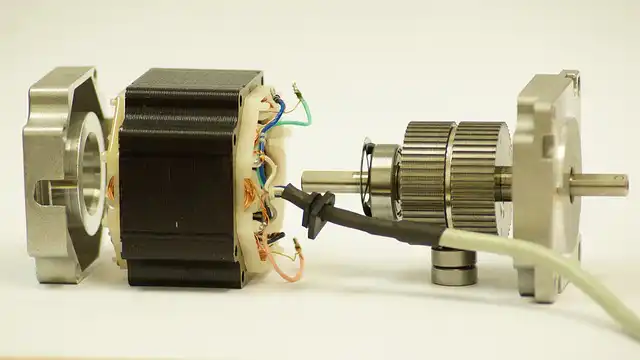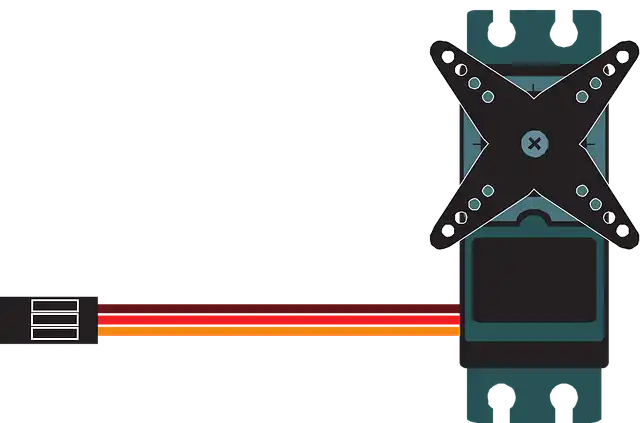Choosing the suitable motor for your machine is also one of the essential things you should consider. CNC machines vary in size, speed, precision, and price. All these factors have a significant effect on the machine’s performance and compatibility with your project.
This applies when choosing between a servo motor and a stepper motor. Knowing which one to go with can be a difficult decision to make. Servo and stepper motors have vital differences. Breaking them down to help you choose the right one for your projects.
Stepper motor
Stepper motors are ideal for small work envelopes, small footprint machines that don’t need high speeds or high torque. Stepper motors work well in an open-loop control element. A stepper motor device that can convert electrical pulse signals into angular displacement.
Open-loop helps eliminate the added cost and complexity of adding a resolver or an encoder to the mix. Stepper motors can generate high torque at zero speed, but the torque usually decreases as speed increases. Stepper motors are ideal for compact and economical solutions to tiny machine applications.

Servo motors
Servo motors work well on CNC machines that need more power to perform effectively. This is especially when the machines are of a specific size and speed. Servo motors serve well in applications that need improved positioning and resolution.
They run quicker than stepper motors and offer a consistent level of torque across the whole speed range of the machine. Servo motors use the closed-loop system. This is an effective way that assists the engine to always know what happens during operation and instantly react if there’s a need.

Difference between servo and stepper CNC motors
Accuracy
The servo motor control accuracy depends on the built-in encoder; the more scale the encoder has, the more significant the accuracy. The stepper motor control accuracy relies on its phases and beats. The more beats and phases it has, the higher the accuracy.
Control Methods
The stepper motor is open-loop control, while the servo motor is closed-loop control.
Torque Characteristics
If the speed of the stepper motor increases, the output torque will decrease. The servo motor maintains a constant torque output throughout.
The Overload capacity
Servo motors have a larger overload capacity. while stepper motors contain zero overload capacity.
Operating performance
Stepper motors use the open-loop control system. The control performance is always reliable because of the closed-loop control. The drive directly samples the feedback signal of the motor encoder with the position loop and the speed loop formed inside. There’s no step loss or overshoot of the motor with servo motors. The steps or stall is easily lost if the starting frequency is too high or the load is too large. If the speed is also too high, it can easily overshoot.
Speed
Generally, servo motors have high-speed performance and better acceleration levels. It requires a few milliseconds, making it ideal in controlling situations that need a fast start and stop. It is by far superior to stepper motors, especially in performance. Stepper motors need hundreds of milliseconds to move from a standstill to an excellent working speed. They are commonly used as executive motors in less demanding situations.
Low-Frequency features
Servo motors will not vibrate at low speeds because they have a resonance suppression function. It can protect against the lack of rigidity of the machine. They also offer system adjustment through the (FFT) Frequency analysis function. Stepper motors are fragile and prone to low-frequency vibration at low speeds. The damping or subdivision technology serves to overcome low-frequency vibrations.
The Controller
Stepper motors are electronic, sending out the same pulse signals. The stepper motor controller controls rotation through every angle. The stepper motor driver receives a pulse signal. There’s the signal converted into a more robust current signal once it enters the stepper motor driver. The stronger signal drives the stepper motor to run. Every time it gets the pulse signal, the driver will offer the engine a pulse to turn the motor through a fixed angle. So, stepper motors are standard in various industries.
A servo motor controller controls a servo motor. The servo motor controller is a high-end product of transmission technology. It is ideal in high-precision positioning systems managing through three ways:
- speed,
- position,
- and torque to achieve high-precision transmission system positioning.
Stepper motor characteristics and features
- The number of pulses per time unit determines the speed of the motor
- A stepper motor can rotate in both directions
- You can interface a stepper motor directly with a digital circuit.
- Stepper motors contain a lower output, and the efficiency is abysmal
- Stepper motors can sustain a holding torque at zero speed
- It has a start-stop mode and slewing mode
- It has static characteristics that are torque-angle curve and torque-current curve.
Servo motor features and characteristics
- They contain voltage, current, torque, control pulse, operating speed, pulse, resolution, and weight.
- It is a closed-loop system
- Can operate a wide range of speed
- Can maintain a constant velocity
- High speed-torque curves
- It is robust and has stable operation
The similarity between servo and stepper motor
Both motors work to provide reliable power for a highly effective system. They have similar features that include positional accuracy and compact mechanical assembly. Moreover, they have very smooth velocity, quiet operation, and reduced machine parts count.
Advantages of stepper motors
- They have high holding torque when powered.
- There’s no turning required, so they need low maintenance
- Have a constant torque and good repeatability
- They cost less
- They aren’t tricky to set up and install
- No damage from mechanical overload
- They are ideal for continuous load applications
- Detent torque when the power is off
Disadvantages
- It has very low efficiency
- They produce high noise when operating
- It doesn’t utilize the feedback loop
- Difficult to operate at high speeds
- It has a resonance issue
- It cannot run on or rotate at high speeds
Advantages of servo motors
- Servo motors have high torque control
- They are quieter and more reliable
- Have high acceleration and accuracy
- They are very efficient with high output power
- Supports closed-loop control
- Have better speed performance and smoother running
- Ideal for varying load applications
Disadvantages
- Servo motors are costly.
- They create a lot of vibration during operation
- Tuning a servo motor is not an easy task
- It requires adjusting to stabilize the feedback loop
- It requires an encoder making it very complex
- It has poor motor cooling and the motor can be damaged by overload.
Closed-loop vs. open-loop stepper motor
Open-loop stepper motors are ideal for applications that do not need high positioning accuracy. Closed-loop can function well in systems that need high accuracy and stability standards.
The output torque increase can decrease open and closed-loop speed. The closed-loop control improves the torque frequency characteristic.
Closed-loop stepper motors have a low resonance compared to open-loop stepper motors.
Closed-loop stepper motors have high-performance feedback compared to open-loop stepper motors.
Open-loop stepper motors are ideal for applications that require low throughput. Closed-loop is best for the high throughput functions such as indexing and edge guide positioning.
- Pyrography Techniques for Beginners: Textures and Shading - January 23, 2024
- Troubleshooting Jointer Issues: Why is Your Jointer Not Flattening Wood? - October 11, 2023
- Unlocking the Secrets of Jointing to Increase Width - September 29, 2023